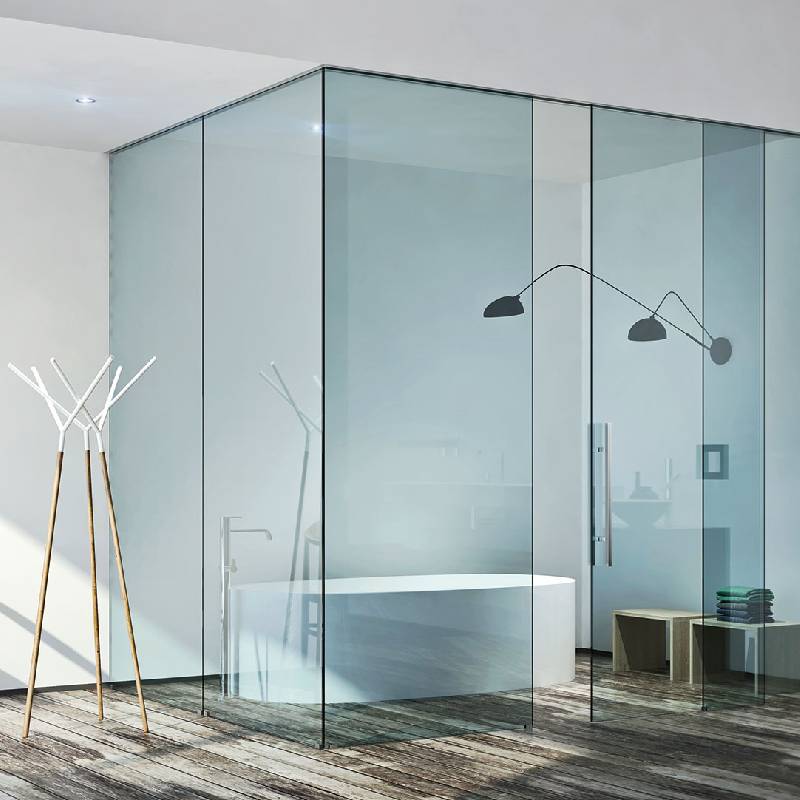

The Allure of On/Off Frosted Glass
Frosted glass has long captivated architects, designers, and homeowners alike with its unique blend of aesthetics and functionality. The recent trend of on/off frosted glass has taken this material to a new level, offering innovative solutions for privacy and style in modern living spaces.
What is On/Off Frosted Glass?
On/off frosted glass refers to a specially designed glass that can transition between transparent and frosted states. This technology utilizes a thin layer of liquid crystal film integrated within the glass. When electricity is applied, the liquid crystals align and allow light to pass through, rendering the glass transparent. Conversely, when the electricity is turned off, the crystals shift, creating a frosted effect that diffuses light and obscures visibility.
Creating Innovative Spaces
The versatility of on/off frosted glass makes it a popular choice in contemporary architecture and interior design. Its ability to shift between privacy and transparency opens up numerous possibilities in various environments, including homes, offices, hotels, and public spaces.
In residential applications, for instance, on/off frosted glass can redefine the concept of open-plan living. Homeowners can maintain a spacious feel by incorporating large glass panels that separate different areas while ensuring that privacy is respected when needed. Imagine a beautiful dining space that can transform into a cozy private nook at the flick of a switch. The fluidity of this design enhances both the functionality and aesthetic appeal of the home.
In commercial settings, such as offices, the use of on/off frosted glass can facilitate a dynamic working environment. Conference rooms can become transparent spaces for collaboration during meetings, and then shift to frosted privacy for confidential discussions. This versatility helps maintain an open and inclusive workplace culture while also allowing for the necessary segregation of spaces when required.

Enhancing Aesthetic Appeal
From an aesthetic standpoint, on/off frosted glass adds a modern touch to any interior space. The seamless transition from transparent to frosted creates a dynamic visual experience that engages the senses. The glass can reflect light beautifully, casting delicate patterns across surfaces, thereby enhancing the overall ambiance of a room. Designers are increasingly using this material as a focal point, incorporating it into feature walls, doors, or even custom furnishings.
Moreover, the minimalist aesthetic of on/off frosted glass aligns perfectly with contemporary design principles. The clean lines and unobtrusive nature of the glass help create a serene environment where form follows function. Its ability to blend into various design styles—from sleek modern to soft Scandinavian—makes it an extremely versatile choice for designers.
Practical Advantages
Beyond its visual appeal, on/off frosted glass also offers several practical advantages. It can improve energy efficiency by harnessing natural light while providing insulation when in the frosted state. This balance can lead to reduced energy costs, making it an environmentally friendly option. Furthermore, the ease of maintenance is a notable benefit; unlike traditional curtains or blinds, this type of glass does not require regular cleaning or upkeep.
Conclusion
The on/off frosted glass is a testament to how innovation can transform traditional materials into modern solutions. Its dual functionality, combined with an elegant aesthetic, makes it an outstanding choice for those looking to enhance their living or working environments. As this technology continues to develop, we can expect to see even more creative applications of on/off frosted glass, further solidifying its place in the realm of contemporary design. Whether for privacy, style, or practicality, this material is sure to shine brightly in the future of architecture and design.